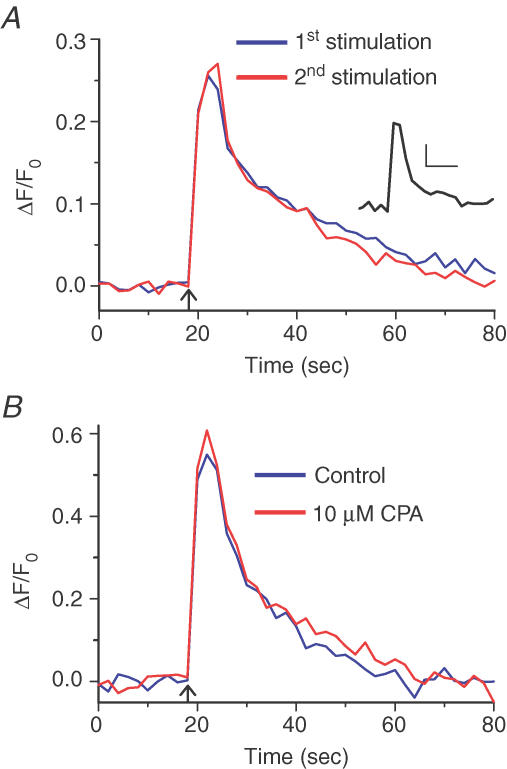Figure 2. Reproducibility of Ca2+ transients evoked in corneal nerve terminals (CNTs) by electrical field stimulation and the unimportance of intracellular Ca2+ stores in Ca2+ regulation.
A, two Ca2+ transients evoked 10 min apart by electric field stimulation (50 stimuli at 10 Hz) in an individual sensory nerve terminal in an isolated cornea. The first (blue) and second (red) Ca2+ transients were essentially super-imposable. In seven CNTs studied, the two transients did not differ in amplitude (P = 0.973) or decay time (P = 0.136). Arrow marks time of stimulation. Inset, Ca2+ transients evoked by electric field stimulation (50 stimuli at 10 Hz) in individual CNTs loaded with the Ca2+ indicator fura-2 dextran (average data from n = 7 CNTs). Scale bars represent 100 nm[Ca2+] (vertical) and 10 s (horizontal). B, Ca2+ transient evoked in CNTs by electric field stimulation (50 stimuli at 10 Hz; blue trace, average data from nine CNTs). After incubation with 10 μm CPA for 10 min, identical electrical stimulation evoked a Ca2+ transient that was similar in peak amplitude (P = 0.571) and 95%–10% decay time (P = 0.294) (red trace, average data from n = 9 CNTs).

